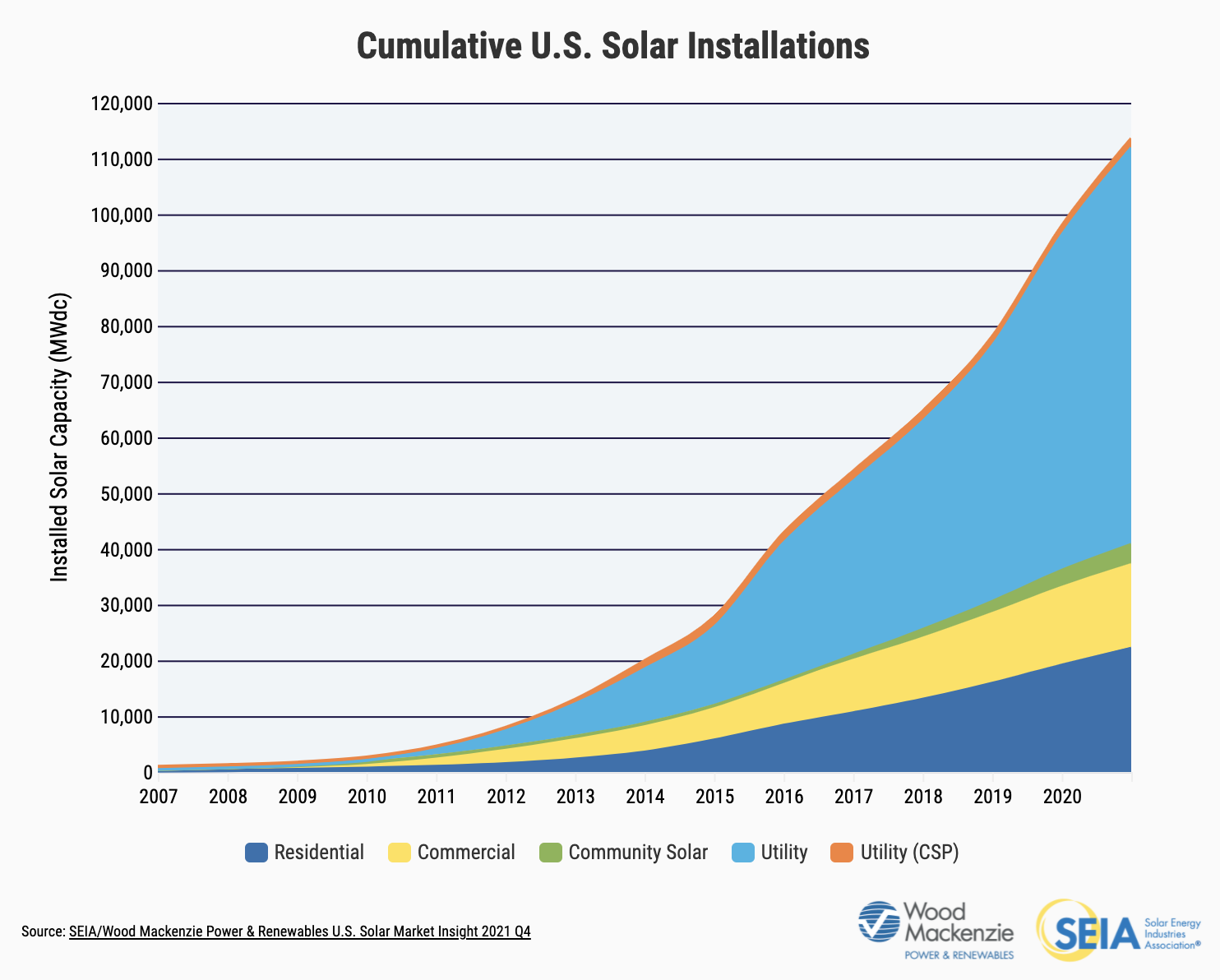What are the 4 Main Types of Solar Energy?
According to an IEA report, energy consumption climbed by 5% in 2021, with over half of the increase being satisfied by fossil fuels, most notably coal, threatening to send carbon dioxide emissions from the power sector to new record levels in 2022. Therefore, the total amount of renewable energy accessible continues to expand. That is welcome news for a planet facing possibly catastrophic climate change.
Energy demand rapid growth
Renewable energy continues to grow rapidly. Due to population and economic expansion, global energy demand quickly rises, particularly in emerging market economies. Global electricity demand increased by nearly 5% in 2021 and is expected to reach 4% in 2022. There was a 1% decline in 2020 due to the effects of the Covid-19 virus outbreak.
In 2019 and 2020, renewable energy growth outpaced demand growth. However, this shift was more pronounced in China, Germany, Spain, and the United States. In these cases, it was primarily due to extremely low or declining demand, suggesting that renewables outpacing the rest of the energy sector is not yet the new normal.
Solar energy global market
The global solar power market has amassed about 170 billion dollars, and the figures are estimated to increase. Even though the impact of the pandemic affected all sectors, the solar industry is projected to reach 422 billion dollars in 2028.
Statista: Value of the solar power market worldwide in 2015 and 2022(in billion U.S. dollars)

Until the mid-1800s, nearly all of the World’s energy demands for heating, cooking, and lighting were met by wood. From the late nineteenth century, fossil fuels—coal, petroleum, and natural gas—have been the primary energy sources. Until the 1990s, hydropower, and wood were the most widely used renewable energy sources. Since then, the amount of energy consumed has increased due to biofuels, geothermal energy, solar energy, and wind energy. Renewable energy output and consumption will hit historic levels in 2020.
In 2020, the electric power sector consumed about 60% of all renewable energy used in the United States, while about 20% of total U.S. electricity generation came from renewable energy sources.
A Global View
Solar photovoltaic (PV) generation accounted for 3.1 percent of global electricity generation in 2018, and it continues to be the third-largest renewable energy technology behind hydropower and onshore wind.
As projects contracted under China’s previous FIT, China alone accounted for 75% of the annual solar PV installations increase between 2019 and 2020.
This shows that renewable energy can significantly contribute to the energy security of the World and the reduction of greenhouse gas emissions. Utilizing renewable energy can assist reduce energy imports and fossil fuel consumption, which is the primary source of carbon dioxide emissions worldwide.
The Forecast
By 2026, global renewable energy capacity is expected to have increased by more than 60% from 2020 levels to over 4 800 GW – similar to the current combined world capacity of fossil fuels and nuclear.
They are expected to account for about 95% of global power capacity growth between now and 2026, with solar PV accounting for more than half. Renewable capacity growth between 2021 and 2026 is estimated to be 50% higher than between 2015 and 2020.
Renewable energy growth is projected to accelerate in all regions between 2015 and 2020. China continues to dominate the world in terms of capacity growth, and the country is on track to reach 1200 GW of combined wind and solar capacity in 2026.
Also, statistics show that India may soon surpass China in growth pace. Europe and the United States are likewise on track to accelerate deployments significantly during the next five years. Together, these four markets contribute to more than 80% of global renewable capacity increase.
Solar installation prices
Solar has become much less expensive in recent years. A typical 6-kilowatt-hour domestic solar system cost more than $50,000 a decade ago. A typical home installation now costs between $16,200 and $21,400 altogether (national averages). This price disparity is critical for increasing and speeding up the adoption of renewable energy sources. According to statistics, residential solar systems are built every 100 seconds in the United States.

The size, component alternatives and configuration, labor expenses, local permitting costs, and applicable incentives and tax credits all influence the final price of a PV system. The following factors could also play a role:
- Sunlight exposure in the region- It’s better if there’s a lot of sunshine! The distance between the panel and the equator impacts the system’s amount of power.
- Labor- Solar companies charge varied labor costs depending on their job type. A renowned firm with better reviews and a faster installation schedule could charge more than others.
- Solar panels (including battery, where available)- The more solar panels, the more expensive the system becomes. Furthermore, as the size of the solar system grows, the average per-unit price drops.
- Rebates and incentives- While not a significant issue, permits and grid connections charges will add a small amount to the total cost of a solar installation.
- Location- Pricing varies according to location, local quoting trends, and differences in system size — states with more significant average system sizes will naturally have lower average solar costs.
These factors could also influence the total cost.
Solar energy Storage
There is no silver bullet option for solar energy storage using existing technologies. Solar energy storage systems are tailored to specific needs and resources. They could include the following:
- Commercial Storage for Solar Energy
Because utility corporations and other enterprises typically have larger budgets than individuals, mechanical and thermal storage are viable possibilities. While the prices of various storage systems can be substantial, they enable utilities to meet peak energy demand.
- Grid energy storage with next-generation batteries
- Compressed air.
- Pumped Hydro
- Home Solar Energy Storage
Lithium-ion batteries are the preferred method of storing solar energy at home. They’re reasonably priced, have a low profile, and may be used for various purposes. Other batteries frequently used in residential applications are saltwater and lead-acid batteries.
Regardless of the type, backup batteries enable homeowners to conserve energy during high production and low demand (i.e., throughout the workday) for use during periods of high demand when generation is reduced. Home solar energy storage inherits large-scale solar energy storage benefits, including resilience, uninterrupted electricity, and cost savings.
Is Solar Energy able to cover growing energy demand?
Solar energy has the advantage of being a sustainable alternative to fossil fuels. While fossil fuels may be nearing the end of their useful life, the sun is likely to last at least a few billion years. Because the sun shines around the globe, every country can produce energy, providing for greater energy independence and security. Solar energy does not have to be used at the national level to provide safety and freedom; solar panels can be installed on individual residences to provide power not dependent on being connected to a bigger electrical grid. Therefore, it can potentially cover the increasing energy demand, at least for as long as the sun shines.
Conclusion
Despite apparent momentum, it appears that growth in renewable energy must accelerate, while significant doubt exists regarding the magnitude of the acceleration required. Governments can help renewable energy grow even faster by tackling critical constraints such as permits and grid integration concerns, social acceptance issues, inconsistent regulatory approaches, and insufficient remuneration.
